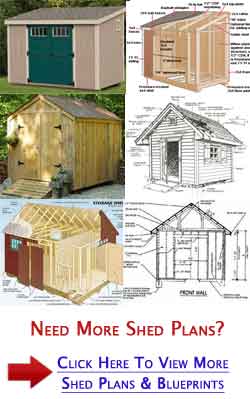

 keepingbusy.com ```html
keepingbusy.com ```html Introduction: Simple Shed Roof Truss Design Building a shed with a sturdy roof requires understanding basic truss construction. This guide provides a step-by-step approach to building simple shed roof trusses, ensuring a strong and reliable structure. Safety is paramount, so always wear appropriate safety gear and consult local building codes before starting.
Materials and Tools: Lumber (typically 2x4 or 2x6, depending on span and load) Plywood gussets (for connecting truss members) Construction screws or nails (specifically for structural use) Measuring tape Pencil Circular saw or hand saw Drill (for screwing) Square Safety glasses Work gloves Sawhorses or a stable work surface
Step 1: Determine Truss Dimensions and Angle The dimensions of your shed will dictate the size of your trusses. First, decide on the width (span) of your shed. Next, determine the desired roof pitch (rise over run). A common shed roof pitch is 4/12 (4 inches of rise for every 12 inches of run). Using this information, calculate the length of the top chords (the angled members) using the Pythagorean theorem or a roof pitch calculator found online.
Step 2: Cut the Top Chords Using the dimensions calculated in Step 1, cut the top chords. Ensure accurate cuts, as even slight inaccuracies can affect the integrity of the truss. Use a speed square or protractor to accurately cut the angle where the top chords will meet at the peak of the truss. Cut two identical top chords.
Step 3: Cut the Bottom Chord (Rafter Tie) The bottom chord, also known as the rafter tie, connects the ends of the top chords and prevents the walls from spreading. Cut the bottom chord to the exact width (span) of your shed. Accuracy is crucial for maintaining the correct spacing and stability of the truss.
Step 4: Assemble the Basic Truss Frame Lay the top chords and bottom chord on a flat, stable surface, forming a triangle. Align the top chords at the peak, ensuring a tight and even joint. Use a square to ensure the bottom chord forms a right angle with the top chords at each end.
Step 5: Secure the Truss Joints with Gussets Gussets are plywood pieces used to reinforce the joints of the truss. Cut plywood gussets to the appropriate size and shape to cover the joints where the top chords meet the bottom chord, and where the top chords meet each other at the peak. Apply construction adhesive (optional, but recommended for added strength) to the gussets before attaching them with screws or nails. Ensure the gussets are securely fastened to all members of the truss at each joint.
Step 6: Add a Vertical Support (Optional, but Recommended) For longer spans, adding a vertical support (king post) from the peak of the truss to the center of the bottom chord significantly increases the truss's load-bearing capacity. Measure the distance from the peak to the center of the bottom chord. Cut a vertical support piece to this length. Attach it securely to the peak and the bottom chord using gussets and screws or nails. Ensure the vertical support is perfectly plumb (vertical).
Step 7: Inspect and Repeat Carefully inspect each truss for any weaknesses or inaccuracies. Ensure all connections are secure and all members are straight. Repeat steps 2-6 to build the required number of trusses for your shed, ensuring each truss is identical to the others. The number of trusses you need will depend on the length of your shed and the spacing between the trusses (typically 24 inches on center).
Conclusion: By following these steps, you can successfully build simple and strong shed roof trusses. Remember to always prioritize safety and consult with local building codes before starting your project. With carefully constructed trusses, your shed roof will be well-supported and durable for years to come.
``` Moisturizers By Simple
 www.simpleskincare.com
www.simpleskincare.com Keeping It Simple & Give People What They Want
 spracklinchiro.com
spracklinchiro.com Montessori Principle 8
 keepingbusy.com
keepingbusy.com


0 komentar:
Posting Komentar